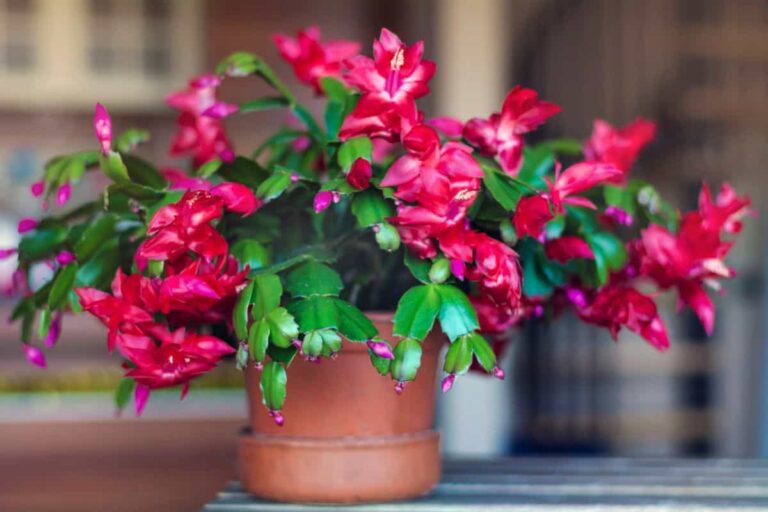Welcome to the magical world of the Christmas Cactus (Schlumbergera x buckleyi) plant! Known for its enchanting beauty and unique blooming habit, this delightful houseplant is sure to capture your heart. It hails from the tropical rainforests of Brazil, where it thrives in the dappled shade of towering trees. What makes this plant truly captivating is its vibrant, pendulous flowers that burst into a riot of colors during the holiday season.
The best part? Despite its dazzling appearance, the Christmas Cactus – similar to the Spiral Cactus – is surprisingly low-maintenance, making it a perfect choice for both novice and seasoned plant enthusiasts alike.
Care
Caring for a Christmas cactus is different from typical desert-loving cacti. This tropical rainforest native thrives on regular watering and features flattened leaves that cascade from containers and hanging baskets. The more stems your plant has, the more flowers it will produce in colors ranging from traditional red to pink, white, purple, salmon, and orange.
- Soil: It can flourish in different soil types such as loamy, sandy, perlite, cactus mix, or general-purpose potting soil, with the ideal pH level falling between 5.5 and 6.2.
- Light: Finding the right balance of sunlight is crucial for the Christmas cactus, as it thrives in partial shade or diffused light. Excessive sun exposure during spring and summer can lead to the plant becoming pale and yellow, so it’s best to provide full sunlight during the winter months.
- Water: Despite being a cactus, the Christmas cactus has tropical roots and requires more water than expected. Water the plant thoroughly, ensuring proper drainage, and allow the soil to dry almost completely between waterings. During hot summers, water two to three times a week, while during winter, once a week or every two to three weeks if kept in a cooler location away from direct sunlight.
- Temperature: From April to September, it thrives in warm temperatures ranging from 70 to 80 degrees Fahrenheit. To initiate bud formation, it needs cooler nighttime temperatures (between 55 and 65 degrees Fahrenheit).
Propagation
To propagate a Christmas cactus, wait one to two months after it finishes blooming, avoiding fall and flowering periods. Take stem cuttings with three to five segments each. Let the cut ends dry out for a few days before planting in a 4- or 6-inch pot with a cactus mix or potting soil. Alternatively, root the stems in water before transferring them to soil. Provide indirect light and a humid environment with a plastic bag initially.
To grow from seeds, extract and wash them before planting in moist soil. Cover with plastic to maintain humidity, place in a well-lit area, and keep the soil moist until seedlings emerge in about two to three weeks. Transplant seedlings when they are large enough to handle.
Pruning
Pruning your Christmas cactus is not only necessary for its growth, but it can also be a fun and rewarding task!
After it blooms, when the plant is ready for new growth, give the stems a playful twist between segments or use a sharp, sterilized tool to remove segments. This will encourage branching and the growth of more of those charming stems.
Feel free to remove up to a third of the plant per year or opt for a more conservative approach by trimming one to two segments from each stem. Get creative and watch your Christmas cactus flourish!
Common Pests
Frequently Asked Questions
To care for a Christmas cactus, provide bright but indirect light, water when the top inch of soil is dry, and maintain a temperature between 70-80°F during its growth period. During bud formation, expose it to cooler nighttime temperatures (55-65°F) and 13 hours of darkness. Prune after blooming for a fuller shape.
Does Christmas cactus need sun or shade?
These plants do not like to be scorched by the sun. If you want to keep them happy, make sure they get filtered, indirect light, and at least 13 hours of darkness every day.
How long should a Christmas cactus last?
While its blooming period usually lasts for about a month, the plant can live for 20 years with proper care.
Why do you put salt on Christmas cactus?
You can enhance the growth, blooming, and seed germination of your Christmas cactus by utilizing Epsom salt or magnesium sulfate—a tablespoon dissolved in a gallon of water serves as an effective monthly foliar spray or fertilizer.


